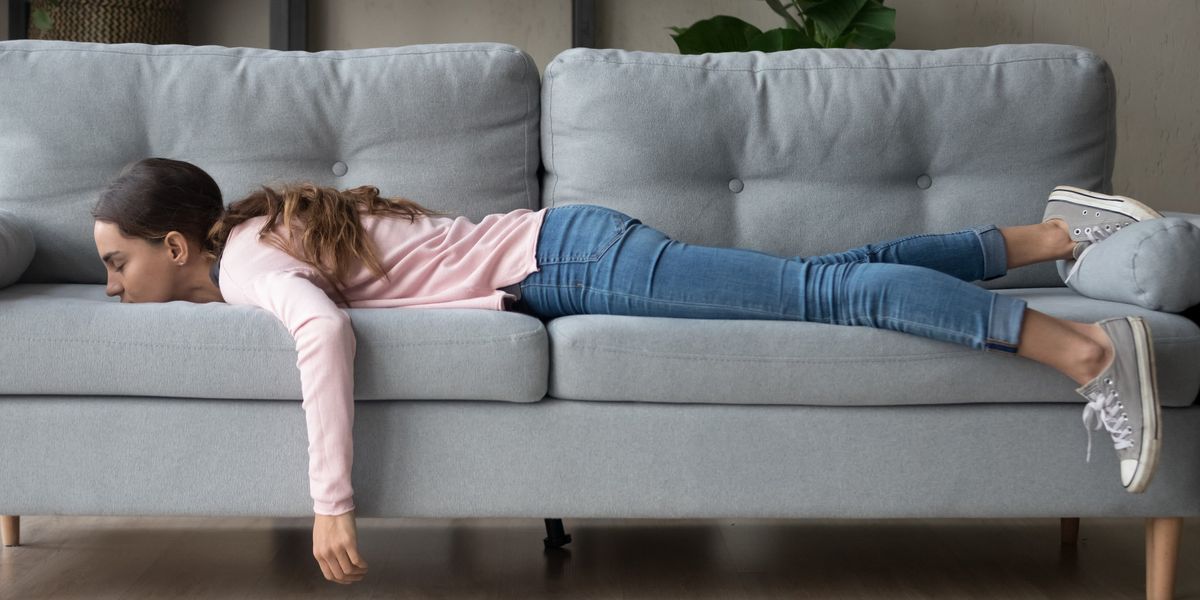Yes, It's OK to Take a Break from Dancing Right Now
When the world began isolating as a result of the COVID-19 pandemic, the dance community sprang into action. Social media was flooded with virtual classes, and at any given moment you could easily find a dozen free options on Instagram. But the novelty of our Zoom-based reality is beginning to wear off—and dancers are feeling physically and mentally exhausted trying to keep up with this new normal. “We need social interaction and direct feedback,” says Dr. Brian Goonan, a psychologist who works with dancers in Houston, Texas. “Most people can’t self-sustain for two months in the absence of feedback.”
It’s okay to struggle with feeling motivated or joyful about dancing in the current circumstances. That’s not an indication that you don’t love dancing, but instead a clear sign that you need a break. In fact, experts agree that one of the best things a dancer can do right now is stop dancing for a while.
The Benefits of Taking a Break
Many dancers don’t have much time off. Between a full school year of classes and summer intensives and competitions, there’s rarely a moment to recharge. “I think young dancers in particular are in a chronic state of being overworked. They aren’t getting enough rest,” says Jason Harrison, a strength and conditioning coach who works with dancers in Dayton, OH. He says that many dancers have a mentality that more means better—add a dance class or 20 more minutes on the elliptical—which can lead to exhaustion. “If you look at how sprinters train, you don’t get faster when you’re tired,” he says. Instead, he advises that dancers should be deliberate in their training and schedule in rest periods. “Ask yourself, ‘Am I doing this class or workout because I’m anxious and insecure? Or am I doing this because I think it’s going to help me?'” he says. “I think that too often the dancer is operating from a place of insecurity.”
Catherine Vargo, a physical therapist who works with dancers at Pittsburgh Ballet Theatre, says that dancers tend to have a lot of physical imbalances that can lead to injury, like when you spend several months working on a piece of choreography you may be lifting one leg ten times and the other only once in that piece. Rest is one of the only ways to fix those imbalances. “Consider using this time to get things properly evaluated by a physical therapist, whether it is virtually or in person,” she suggests. Vargo also points out that many dance injuries, including tendinitis and stress fractures, are overuse injuries. “This is an opportunity to slow down and really allow some of those chronic overuse injuries the time to truly heal,” she says.

Getty Images
Don’t Stress About Falling Behind
Many dancers are competitive and perfectionistic, but it is important to remember that this is an extraordinary situation, and everyone is struggling. “Dancers think that every minute that they aren’t in the studio is a minute that they will lose to their competitors, and in this environment that is just not true,” says Goonan.
From a physical standpoint, your hard-earned conditioning is tougher than you think, according to Harrison. “Cardiovascular and physical strength are both incredibly resilient attributes. You can take time off and still come back and get strong.” Harrison recommends keeping up with conditioning at home by sprinting and jumping (with sneakers on if you don’t have a sprung floor). And in terms of reps, both Harrison and Vargo agree that it is the quality of the jump that matters, rather than the number you do.
As dancers in some parts of the world and the country are re-entering the studios, they are likely finding that some of their skills may feel more difficult than before. But Vargo urges dancers to understand that some of those setbacks may have come with or without the pandemic. “Younger dancers are always transitioning, so a skill that was easy two weeks ago can suddenly become a challenge,” she says. She adds that these challenges come as a natural part of development from hormonal changes, growth, changes in center of gravity and balance as well as others. “Dancers need to give themselves a little bit of grace, and say, ‘This is hard for me now, and it may be because of growth and change, and not just time away.”
Expand Your Interests
In the same way that this time out of the studio is an opportunity to address the balance in your body, Goonan encourages dancers to address the balance of their interests as well. Mental health professionals who work with dancers repeatedly cite many dancers’ association with a fixed identity of “a dancer” as a psychological hurdle they need to overcome. If your sense of self is completely tied to dance, injuries, rejections, or, say, a global pandemic will leave you at higher risk for mental health challenges. Goonan asks dancers to finish the following sentence: “I am a person who…” He says the first answer is predictably, “dances,” to which he replies, “Great, now what are the other 11 things?” He advises dancers to actually write these multifaceted elements of their identities down, look at their lists every day, and ask themselves how they’re honoring each of those things.
“If I had a 14-year-old or 15-year-old dancer and their choice was between taking a lot of random Zoom classes that may or may not be appropriate, or learning how to cook, I would want them to learn how to cook ten out of ten times,” Harrison says.




